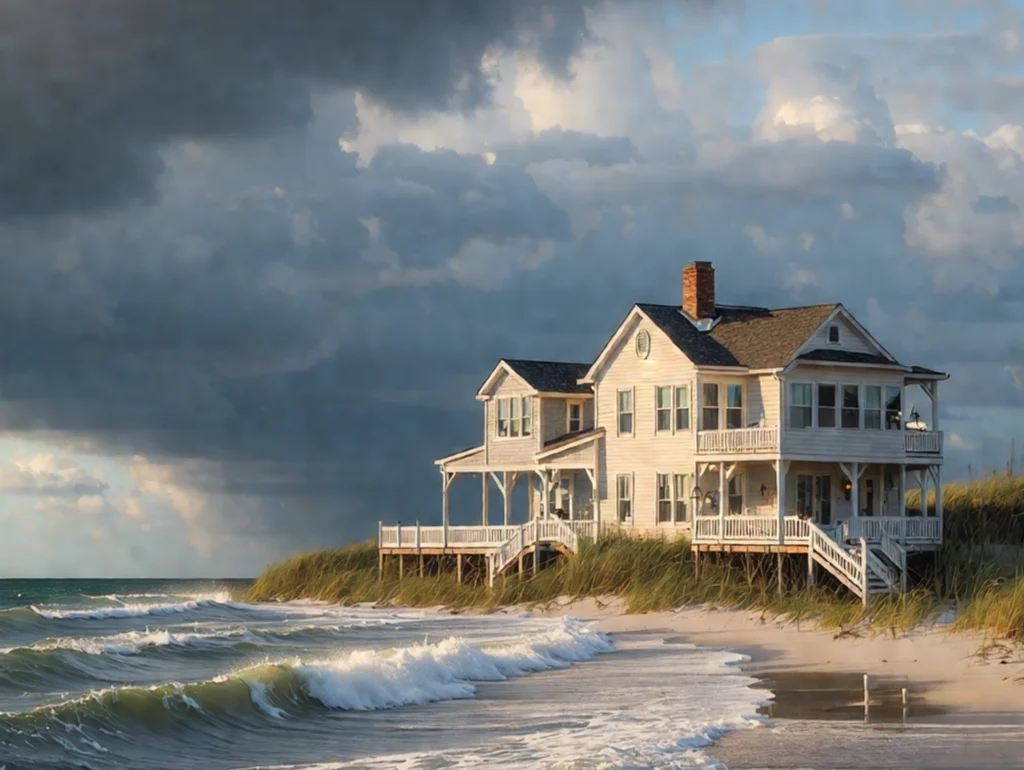Understanding Flood Insurance in New Jersey
Moving to a beautiful barrier island in New Jersey comes with its perks—oceanfront views, a close-knit community, and peaceful living by the shore. But, with these benefits comes a non-negotiable reality: the necessity of flood insurance. Whether you’re buying your dream home or a vacation property, understanding the fundamentals of flood insurance can protect your investment and your peace of mind.
Why Flood Insurance is Essential for Coastal Living
New Jersey’s coastal areas are highly vulnerable to rising waters and storm surges, making flood insurance a key part of homeownership. Properties near water are often at higher risk of flood damage from hurricanes, nor’easters, and tidal surges. Additionally, mortgage lenders generally require flood insurance for properties in high-risk areas.
Even if your new property is in a lower-risk zone, don’t skip coverage—flooding is unpredictable and can happen anywhere. With flood damage being one of the costliest disasters for homeowners, having a solid policy can save you from unexpected financial strain.
Breaking Down FEMA’s Risk Rating 2.0: What Has Changed?
FEMA’s Risk Rating 2.0, introduced in 2022, brought significant changes to the way flood insurance premiums are calculated. Previously, homeowners needed an elevation certificate to determine rates. Under Risk Rating 2.0, FEMA uses advanced tools, including satellite imagery and historical data, to assess each property’s risk more accurately.
Key Updates:
- No elevation certificate required: FEMA now determines rates using factors like distance to water, local flooding history, and replacement cost.
- Impact on premiums: About 64% of policyholders saw a modest $0-$10 monthly increase, while some saw reduced rates.
- Rate caps: FEMA caps annual premium increases at 18%, providing predictable rate adjustments.
FEMA Insurance vs. Private Insurance: Key Differences
Homeowners can choose between FEMA flood insurance and private market options. However, FEMA policies come with crucial benefits, such as:
- Rate protection: Private insurers can raise rates or even drop coverage, while FEMA policies cap annual increases.
- Coverage limit: FEMA policies offer up to $250,000 for homes and $100,000 for contents. For condominium buildings, combined coverage applies—meaning two-unit buildings could see up to $500,000 in coverage.
If you’re considering private insurance, be cautious—those policies may not have the same stability or affordability guarantees.
What Determines Flood Insurance Rates in Barrier Island Areas?
Flood insurance rates can vary significantly due to location and other factors. FEMA takes the following into account:
- Proximity to water bodies: The closer the property is to the coast, the higher the risk of flooding.
- Elevation and flood zone: Although elevation certificates aren’t required, property height and its flood zone classification still influence premiums.
- Home value: Higher replacement costs may result in higher premiums.
One important note: only a licensed agent, such as K McCoy Insurance Agency, can provide accurate flood insurance quotes since FEMA does not publicly disclose its rate calculation formula.
What Every Buyer Should Know About Condo vs. Single-Family Home Coverage
If you’re purchasing a condominium, flood insurance is often already part of the building’s master policy. To verify coverage:
- Request the declarations page from the condo association and confirm it meets lender requirements.
For single-family homes, things work differently. Sellers may have a transferable policy you can assume at their rate. This option could help you secure a lower premium compared to starting a new policy.
Avoiding Surprises: Tips for Calculating Real Flood Insurance Costs
- Understand FEMA’s 30-day waiting period: If you’re paying cash for your property, your flood insurance policy won’t activate immediately. Ensure your closing date is at least 30 days out to avoid coverage gaps.
- Primary vs. secondary residence fees: Secondary homeowners pay a $250 annual FEMA surcharge that primary residents don’t.
- Talk to a professional: Get a personalized quote from K McCoy Insurance Agency to avoid relying on neighborhood assumptions or outdated estimates.
Conclusion: Securing Your Coastal Home with Confidence
Flood insurance doesn’t have to be complicated. With the right policy and professional guidance, you can confidently protect your coastal home and enjoy all that New Jersey’s shore has to offer. Whether you’re navigating FEMA’s Risk Rating 2.0 or choosing between coverage options, reaching out to K McCoy Insurance Agency ensures you get accurate information and the best policy for your needs.


